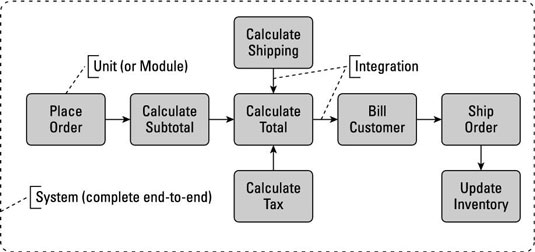BA Knowledge Area.
Knowledge Area - Business Analysis
Knowledge areas are the major components of business analysis as this are the key skills every BA should have. Also this are the aspects on which a IIBA certification rely on to identify your BA skills and responsibilities that were executed during the period.
In other words Knowledge Areas define areas of specific expertise.There are overall of 6 knowledge areas in business analysis.

Keys knowledge areas are;
- BA Planning & Monitoring
- Elicitation
- Requirement Life Cycle Management
- Strategy Analysis
- Requirement Analysis
- Solution Evaluation
Summarized information for knowledge areas is as below,
- BA Planning & Monitoring
- Elicitation
- Requirement Life Cycle Management
- Strategy Analysis
- Requirement Analysis
- Solution Evaluation

This is the phase where requirements are collected by various techniques by conducting meetings with external stakeholders.
In requirements engineering, requirements elicitation is the practice of collecting the requirements of a system from users, customers and other stakeholders. The practice is also sometimes referred to as "requirement gathering".
The requirements life cycle guides business analysts in managing requirements throughout their life span. The relationships between requirements and designs must be understood, traced, and approved to ensure solutions meet stakeholder needs.
describes the business analysis activities necessary to define future and transition states needed to address an organizational business need. Strategies may exist for the entire enterprise, for a division, department or region, and for a product, project, or iteration. Strategy Analysis is often the starting point for initiating a new project and is continued as changes occur and more information becomes available. It is through Strategy Analysis activities that business requirements are identified and documented.
Requirements analysis, also called requirements engineering, is the process of determining user expectations for a new or modified product. These features, called requirements, must be quantifiable, relevant and detailed. In software engineering, such requirements are often called functional specifications.
Requirements analysis is critical to the success or failure of a systems or software project.The requirements should be documented, actionable, measurable, testable, traceable, related to identified business needs or opportunities, and defined to a level of detail sufficient for system design.
The Business Analysis Solution Evaluation was previously known as Business Analysis Solution Assessment & Validation. IT describes the tasks that business analysts perform to assess the performance of and value delivered by a solution in use by the enterprise, and to recommend removal of barriers or constraints that prevent the full realization of the value.



Business Analysis is a critical knowledge area in project management and organizational development, focusing on identifying business needs and finding technical solutions to business problems. Here are the key aspects of Business Analysis:
ReplyDelete1. Understanding Business Needs:
Stakeholder Engagement: Actively involves stakeholders to understand their requirements, concerns, and objectives.
Problem Identification: Identifies gaps between current capabilities and desired outcomes.
2. Requirements Gathering:
Elicitation Techniques: Utilizes methods such as interviews, surveys, workshops, and observations to gather requirements.
Documentation: Clearly documents requirements in formats such as Business Requirements Documents (BRDs), Functional Requirements Documents (FRDs), or user stories.
3. Analysis and Validation:
Requirements Analysis: Evaluates and prioritizes requirements based on business value, feasibility, and impact.
Validation: Ensures that requirements are aligned with stakeholder expectations and are feasible for implementation.
4. Solution Assessment:
Feasibility Studies: Assesses potential solutions for their feasibility, cost-effectiveness, and alignment with business objectives.
Options Evaluation: Analyzes different solutions and recommends the best course of action.
5. Stakeholder Communication:
Regular Updates: Provides continuous updates to stakeholders regarding project progress, changes, and impacts.
Facilitating Discussions: Facilitates discussions between stakeholders and project teams to ensure clarity and alignment.
6. Change Management:
Impact Analysis: Assesses the impact of proposed changes on the business and its processes.
Training and Support: Works with teams to develop training programs and support systems for stakeholders affected by changes.
7. Continuous Improvement:
Feedback Loops: Establishes mechanisms for collecting feedback on solutions and processes for ongoing refinement.
Performance Metrics: Defines key performance indicators (KPIs) to measure the success of implemented solutions.
Big Data Projects For Final Year Students
Image Processing Projects For Final Year
Deep Learning Projects for Final Year